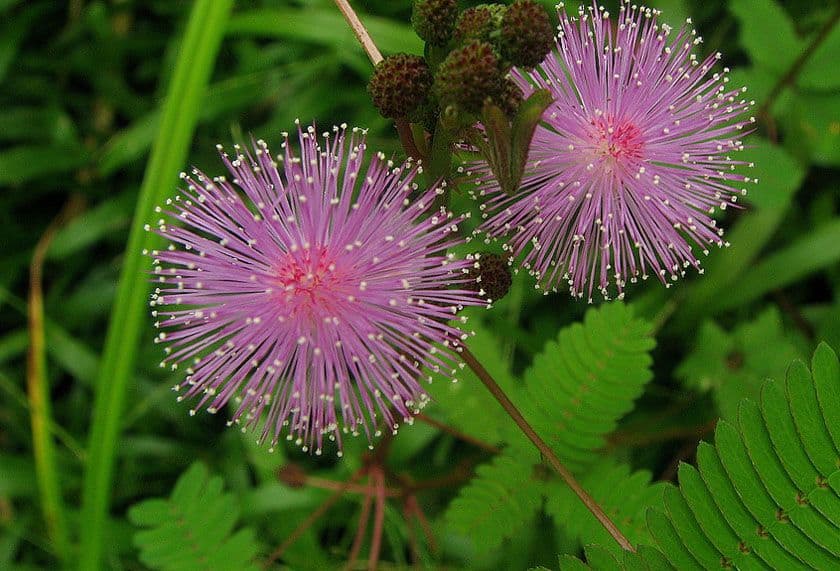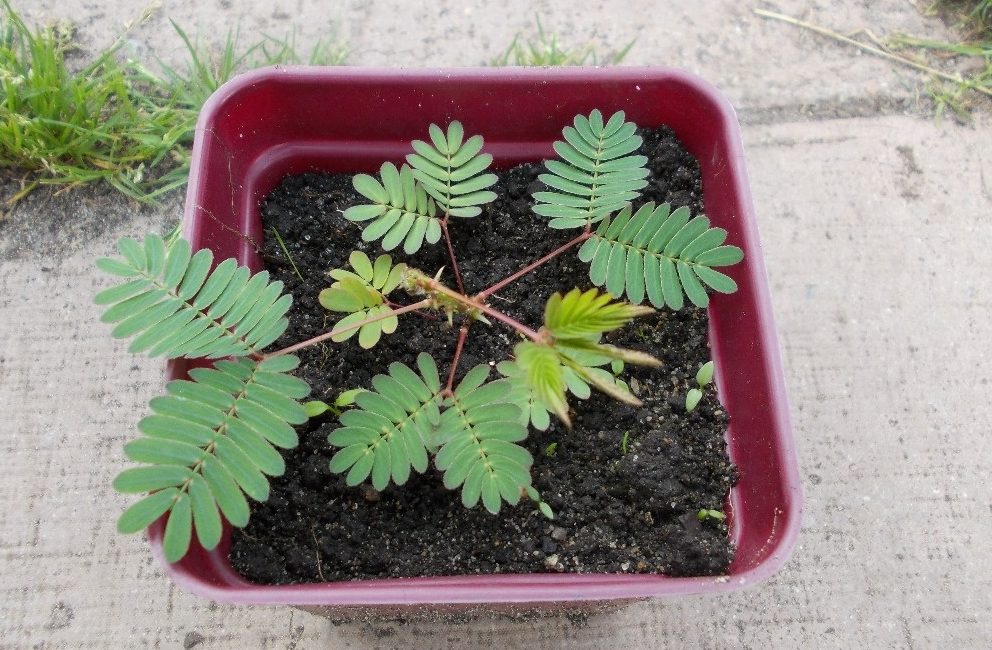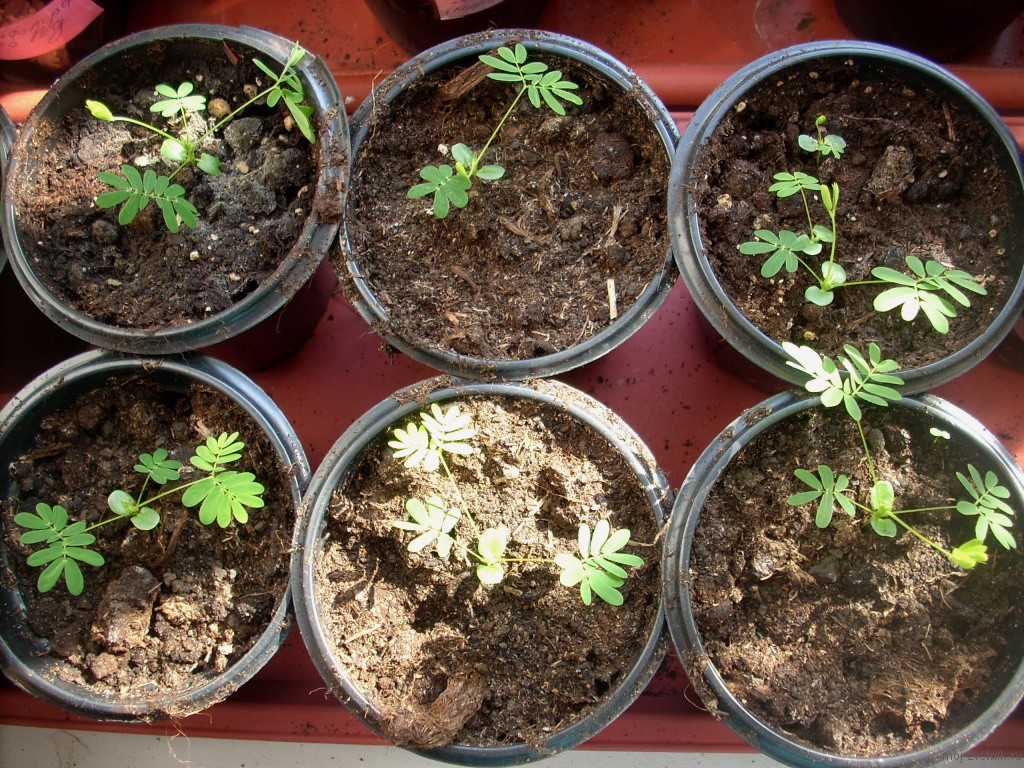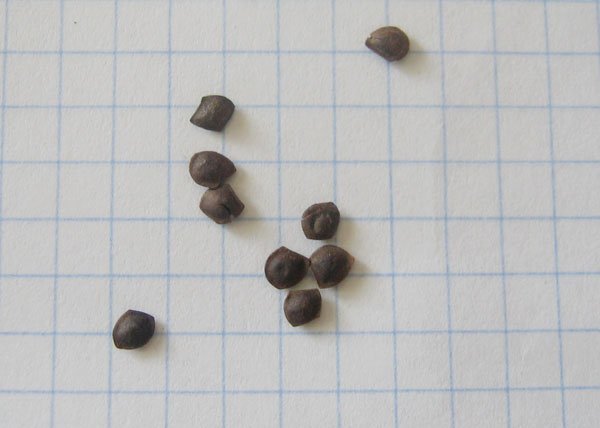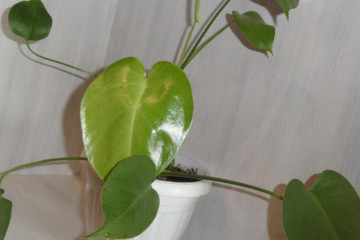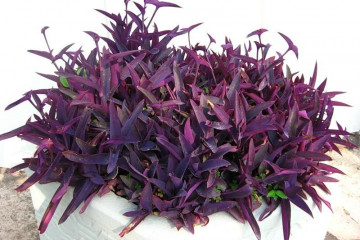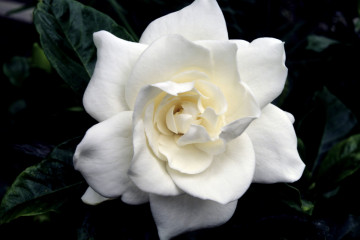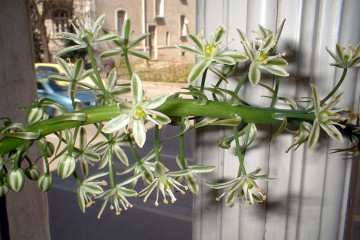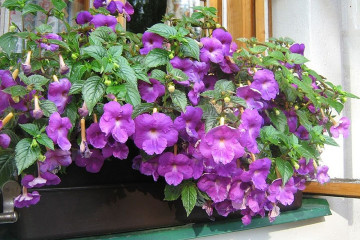Shy mimosa - what a plant, all about her
Content:
In Russia, the mimosa flower is associated with International Women's Day. Men congratulate the ladies with bouquets of small yellow flowers. Among the mimosa species, there are shrubs and trees with graceful flowers. One of the varieties of an amazing plant is bashful mimosa, which is grown at home. The variety has individual characteristics.
Shy mimosa - what kind of flower is it, what family it belongs to
The shy mimosa belongs to the legume family. A perennial herb grows 30 to 70 cm tall in the wild. Many people ask the question: is it a tree or a bush? Of course a bush. Indoor mimosas are lilac fluffy balls on long shoots. At the base of the petioles, there are water membranes, and on the leaves there are sensory areas that respond to pressure. An indoor plant is considered an ornamental deciduous species. Homeland - tropical regions of Brazil.
Short description, history of origin
The world of flowering plants is rich in interesting and sometimes funny names. The bashful mimosa got its nickname for its unusual feature. The plant has particularly sensitive fern-like leaves. With the onset of evening, when touched and any mechanical effect, the leaves fold very quickly.
Growing from seeds at home
At home, shy mimosa is grown by seed. Sowing is recommended in late February or early March. Before planting, you should prepare seeds that have a fairly hard shell. For faster germination, it is recommended to carry out stratification, or rub the shell of the seed with sandpaper. The soil needs to be saturated with nutrients. Seed material is laid in the soil, which is poured into the prepared container. The health of the plant and the duration of flowering depend on the correct care of the crops.
How to care for a touchy one at home
Competent home care for bashful mimosa includes creating the necessary conditions for full growth and abundant long flowering. It is important to water, fertilize, and transplant and prune in a timely manner.
Illumination and temperature conditions
The graceful mimosa pudica is native to the tropics, so it is fond of sunlight. Even the scorching rays of the sun do not negatively affect the shy woman. It is advisable to put flower mimosa in a pot on the windowsill on the east side. And the best option would be a curbstone near the window on the south side. Indoor mimosa should be accustomed to bright sunlight gradually.
The growing season lasts from March to October.The optimum room temperature should be from +20 to +24 ℃. In the winter dormant period, the temperature must be reduced to 17-18 ℃ above zero. Regular airing of the room where the modest beauty grows is encouraged.
Watering rules and humidity
During the growing season, shy mimosa requires frequent, timely watering. An important rule is maintaining the optimal amount of moisture in the pots. No need to flood the plants. During the flowering of lilac-pink mimosa, watering is carried out every other day. Water settles in advance within a day. Room humidity should not be less than 70%. It can be increased by conventional air spraying. It is not recommended to spray water on the leaves of the flower.
Top dressing and soil quality
The shy flower has no special requirements for the composition of the soil. When planting and replanting, the soil must be well fertilized. Then, about 2 times a month should be fed with liquid mineral preparations. In winter, during rest, the application of fertilizing should be reduced as much as possible.
Flower container size
To transplant or plant a flower, it is important to choose the correct size of the pot or other container used. The size of the pot for sowing seeds should not exceed 15 cm in diameter. During the growth and development of the plant, every 3-4 years, the capacity increases in diameter by 3-4 cm.
Pruning and replanting
To prevent the plant from stretching upwards, it is recommended to pinch the top. This will help the new sprouts. Pruning is best done after flowering. Remove dried buds and dry leaves.
Home bashful mimosa is grown as an annual, and does not require transplantation. This process is carried out in two cases:
- if the plant is sick, it is necessary to change the substrate and check the roots for rot;
- they specifically want to leave the room modest for the winter, and grow it like a perennial.
The flower is transplanted by the transshipment method. To do this, take a new larger pot, and the plant, along with a lump of soil, must be planted there. Previously, a layer of pebbles or broken bricks is laid out on the bottom.
Features of flowering plants
Long flowering. The flowers do not emit a strong aroma; a large number of flowers can smell. The cultivation of the plant is carried out in the conditions of the Russian climate on personal plots, at home on window sills, on balconies and terraces.
A period of activity and rest
A plant of the legume family is distinguished by the duration of flowering. Starting in spring and ending with the time of the first frost, mimosa will delight with lush, abundant flowering. The lifespan of each flower from pinkish - lilac globular inflorescences is about three days. After the petals fall, a new bud begins to bloom very soon.
Types and shape of flowers
Perennial when grown at home as an annual. In addition to the bashful mimosa of a lilac or purple hue, the following types are popular among flower growers:
- Mimosa is lazy. The bush may look small. Has fluffy white inflorescences.
- Rough mimosa. Decorates the room with yellow or white spherical flowers.
All types are sensitive to touch.
Flower reproduction methods
Reproduction of pink mimosa occurs by seeds and cuttings. Each method has its own advantages.
Propagation by cuttings
This method is almost never used by growers for plant cultivation. This is explained by the fact that the cuttings do not take root well in the soil after planting. But the plant gives seeds well, and every autumn you can collect a sufficient amount from an adult mimosa.
Seed propagation
The method is used more often by cuttings. The step-by-step method of seed propagation includes:
- Before laying the seeds in the prepared nutrient soil, it is advisable to soak them for about 2 days in warm water.
- Pour the nutrient mixture into the prepared container, then plant the seeds.
- Top crops are covered with cling film and glass. This will speed up the hatching of the seeds.
- Plant pots or boxes in a well-lit area.
- Water the crops with water only at room temperature as needed.
Growing problems, diseases and pests
Like all indoor crops, mimosas are susceptible to disease or pest infestation. If you do not follow the rules of care, the flower can get sick. Spider mites and aphids can harm the shy touchy. They can be seen when visually examining the bush.
How to deal with them
Plants need proper care. The resistance of mimosa to diseases and pests depends on compliance with the rules of watering, making fertilizing. During preventive examinations, the identified infected areas should be removed, and then the plants should be treated with insecticidal agents.
Growing a beautiful and lush bashful mimosa is not so difficult if you adhere to the necessary rules. You should not specifically touch the flower for the sake of interest, so his strength will quickly deplete.
